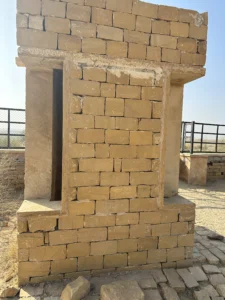Jaisalmer fossil stone benefits
Jaisalmer, a city in the Indian state of Rajasthan, is famous not only for its rich cultural heritage and stunning architecture but also for its unique natural resource, the Jaisalmer Fossil Stone. This stone, often referred to as Jaisalmer stone, has gained attention for its aesthetic value and supposed benefits. Here’s an exploration of this intriguing material.
Understanding Jaisalmer Fossil Stone
Jaisalmer stone is a limestone that is found in the Jaisalmer region of Rajasthan. It is distinguished by its medium-grained texture and warm, golden-yellow color, which has earned it the nickname “Golden Stone.” However, what makes this stone particularly fascinating is the presence of fossils within it. These fossils are remnants of marine life from the Jurassic era, approximately 180 million years ago.
Aesthetic Value
The primary draw of Jaisalmer stone is its beauty. The presence of fossils gives each slab of stone a unique and intricate pattern, making it a popular choice for architectural and interior design purposes. It’s often used in flooring, wall cladding, and as decorative elements in buildings. The stone’s warm tones bring a natural and earthy feel to spaces, while its fossil imprints add an element of historical intrigue.
Perceived Benefits
Historical and Educational Value: For history enthusiasts and educators, Jaisalmer stone serves as a tangible connection to the Earth’s distant past. The fossils embedded in the stone are a source of fascination and can be used as educational tools to discuss geology and paleontology.
Eco-Friendly Material: As a natural stone, Jaisalmer stone is considered an eco-friendly building material. Its extraction and processing have a lower environmental impact compared to synthetic materials.
Durability and Maintenance: Jaisalmer stone is known for its durability, able to withstand wear and tear over time. It’s also relatively easy to maintain, requiring regular cleaning and occasional sealing to preserve its appearance.
Energy Efficiency: Being a dense material, Jaisalmer stone has good thermal mass, meaning it can help in regulating indoor temperatures. This property can contribute to energy efficiency in buildings, especially in hot climates.
Aesthetic and Emotional Well-being: The unique appearance of the stone, with its natural patterns and warm hues, can create a sense of calm and connection to nature, potentially contributing to emotional well-being.
Potential Drawbacks
While Jaisalmer stone offers many benefits, there are potential drawbacks to consider. The extraction of natural stone can lead to environmental impacts, such as habitat destruction and resource depletion. Additionally, the transportation of the heavy stone from Rajasthan to other parts of the world contributes to its carbon footprint.
Conclusion
Jaisalmer Fossil Stone is more than just a building material; it is a piece of Earth’s history. Its aesthetic appeal, combined with its durability and eco-friendly nature, makes it a popular choice in architecture and design. However, like any natural resource, its use should be balanced with considerations of environmental impact and sustainability. For those who choose to use Jaisalmer stone, it offers a unique blend of beauty, history, and utility.


